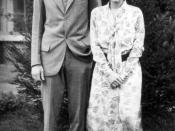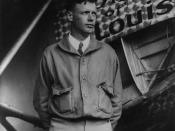Famous murder cases in the history of the United States of America have been taught in classes all over the country as a means of looking back at the country to see what life was like in the past and to see how the country has changed since then. The major idea of looking at past cases is to see how the laws of the land have changed over time. The Hauptmann Case is a historical case that set the foundations for today's kidnapping laws. This case also led to the first federal law that stated transporting a kidnapped person over state lines was a federal offense. The events that led up to the kidnapping affected the procedure of the trial and the rapidness of it. The notoriety of Charles Lindbergh affected the kidnapping of Charles Lindbergh Jr., which led to the arrest and trial of Bruno Hauptmann, the appeals by the defense, and the first federal laws about kidnapping.
In May of 1927, Charles Lindbergh became a national hero when he flew across the Atlantic Ocean by himself in his plane named "The Spirit of St. Louis." During his flight he had flown over 3,600 miles in 33.5 hours. When he returned home he received both the Distinguished Flying Cross and the Congressional Medal of Honor. He was also promoted to Colonel and he returned as a national American hero. Two years later he met and married Anne Morrow on May 27, 1929. Their first child, Charles Lindbergh Jr., was born on June 22, 1930. The child was known as the "Eaglet" up until, and even after, his disappearance in 1932.
The Lindberghs were devastated to find that their baby had been kidnapped for ransom money. Mrs. Lindbergh wrote letters nearly every day to her mother-in-law to...


